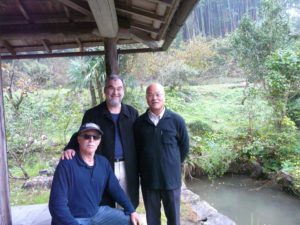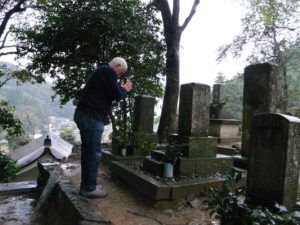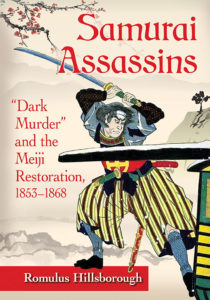My Inspiration In Writing About the Samurai Revolution (Part II)

Recently I mentioned my inspiration in writing about the Samurai Revolution. The samurai I write about “kick ass,” I said. But I did not say that I am sure that all of them were capable of seppuku– self-disembowelment. This is unthinkable to most people in the 21st century. Following is my rendition of an eyewitness account of the seppuku of Takéchi Hanpeita of Tosa, included in my Samurai Assassins:
Kneeling between his two seconds, Takéchi inspected the blade of the dagger before replacing it on the stand in front of him. Then he removed both arms from his stiff ceremonial robe, baring his shoulders, and loosened the sash around his waist, exposing his lower abdomen. Again he took up the dagger and, wrapping the hilt with the piece of white cloth, plunged in the blade and pulled it across his belly. Blood gushed from the wound as he repeated the process two more times, cutting three horizontal lines as he had vowed. Then deliberately placing the dagger on his right side, he fell forward with both arms extended. That instant the two seconds drew their swords, stabbing him through the heart six times until he was dead. [end excerpt]
I had the opportunity to visit Takechi’s ancestral home, including his grave, in Kochi in November 2015 (below), with my friends Douglas Stiffler and Mamoru Matsuoka. Professor Stiffler is a great-great grandson of Katsu Kaishu. Mr. Matsuoka, a native of Kochi, is Takéchi’s preeminent biographer. He describes the setting of Takechi’s house as follows (my translation included in Samurai Assassins):
“[in] a quiet mountain hamlet . . . bathed in bright sunshine. Surrounded on three sides by mountains, the south side opens to a small field, and the drawing room is filled with sunlight throughout the day. To the north lies the Kōchi Plain, beyond which is a view of the Shikoku Mountain Range, with the Pacific Ocean spreading out just beyond the hills to the south. The blue sea of these southern climes, which sparkles brightly during ordinary times, can, when the weather turns bad, change to a gray raging billow, enough to frighten even a sailor—and hit Tosa hard.



